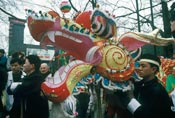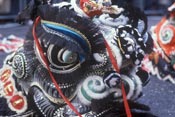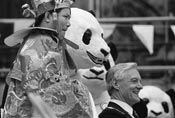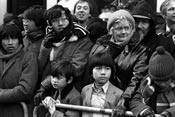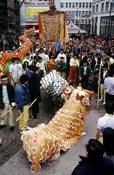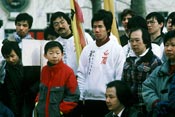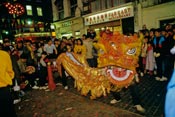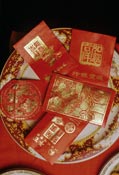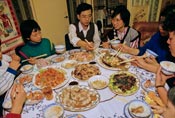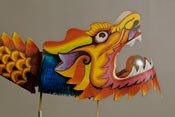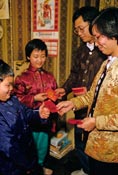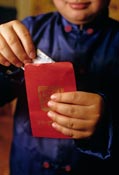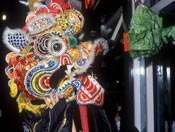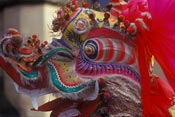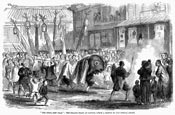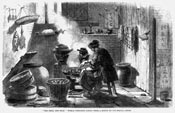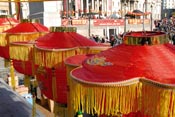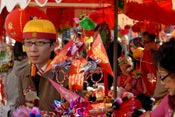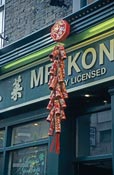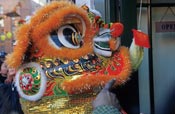
The Chinese have been with us in numbers since the beginning of the 19th century when seamen started to arrive and settle in major ports like London and Liverpool. They were regarded as cheap labour by British seamen and therefore subject to hostility, which they answered with close-knit communities and mutual dependence. The hostility has long gone, and countless Chinese have married into the outside world, but the close communities still remain behind the Chinese restaurants of ‘Chinatown’ in almost any major city in Britain - and the rest of the world for that matter. London actually has two, the famous one immediately to the north of Leicester Square and the much older and still more exclusive one in Limehouse, near Canary Wharf and the former docks. Chinese traditions and customs must live on behind those closed doors, and Geoff Howard has actually managed to photograph some of them for us. The one they are happy to share with the rest of us is Chinese New Year.
Chinese New Year, as everyone knows, falls on the second new moon after the winter solstice, which in the Gregorian Calendar would be between January 21 and February 20. Chinese years are named according to a 12-year cycle of the animal zodiac, Rat, Ox, Tiger, Rabbit, Dragon, Snake, Horse, Goat, Monkey, Rooster, Dog, Pig. We are currently (2013AD) in the year of the Snake. There is more; the Chinese have their own calendar which says they are in year 4708. The actual celebrations go on for a fortnight, with rituals to be observed on particular days,special foods to be eaten, gifts exchanged, firecrackers lit, red envelopes full of good fortune showered on the children, lion dancers to perform, food offerings made to the gods. The bit we Brits get to see is the lion and dragon dancing.
